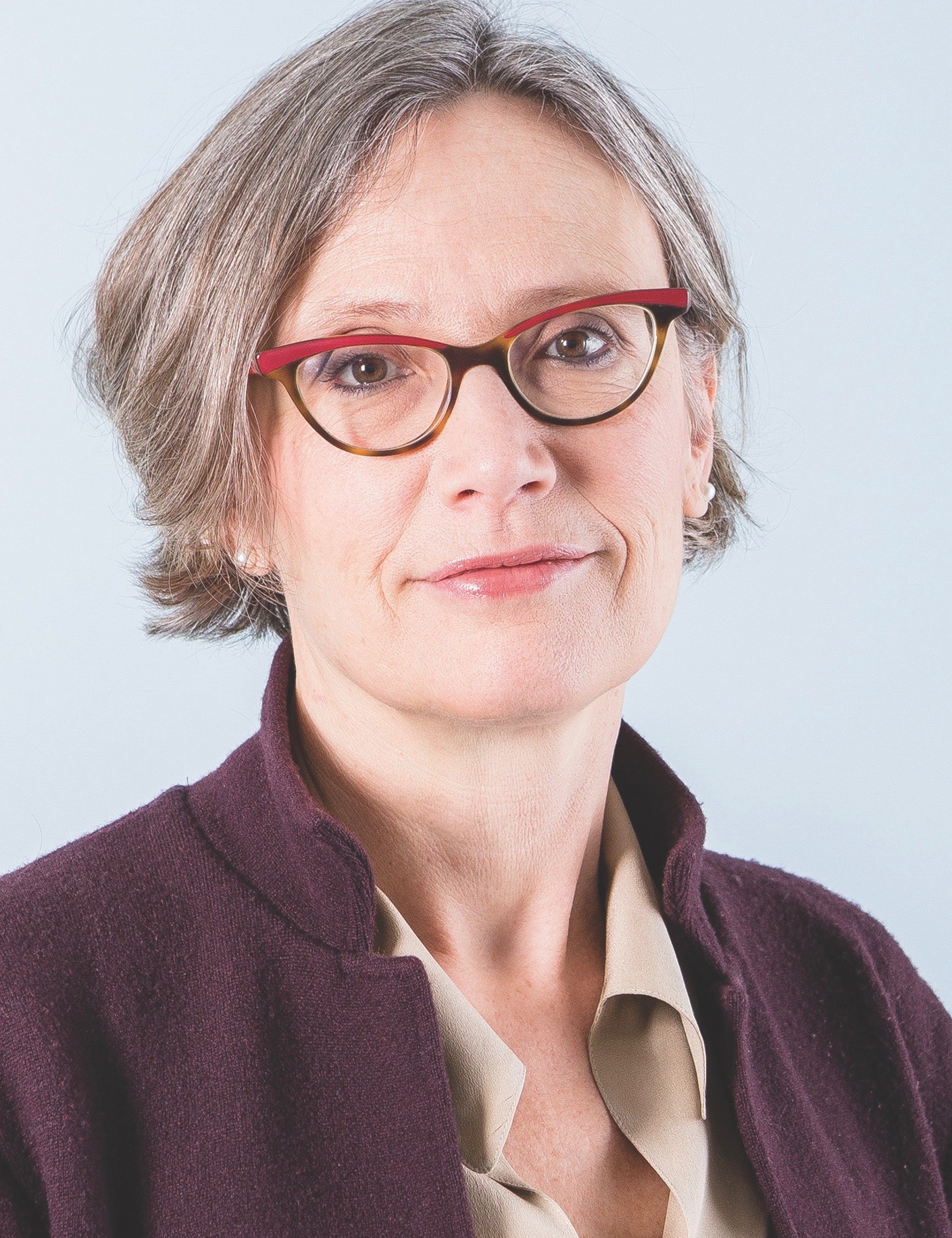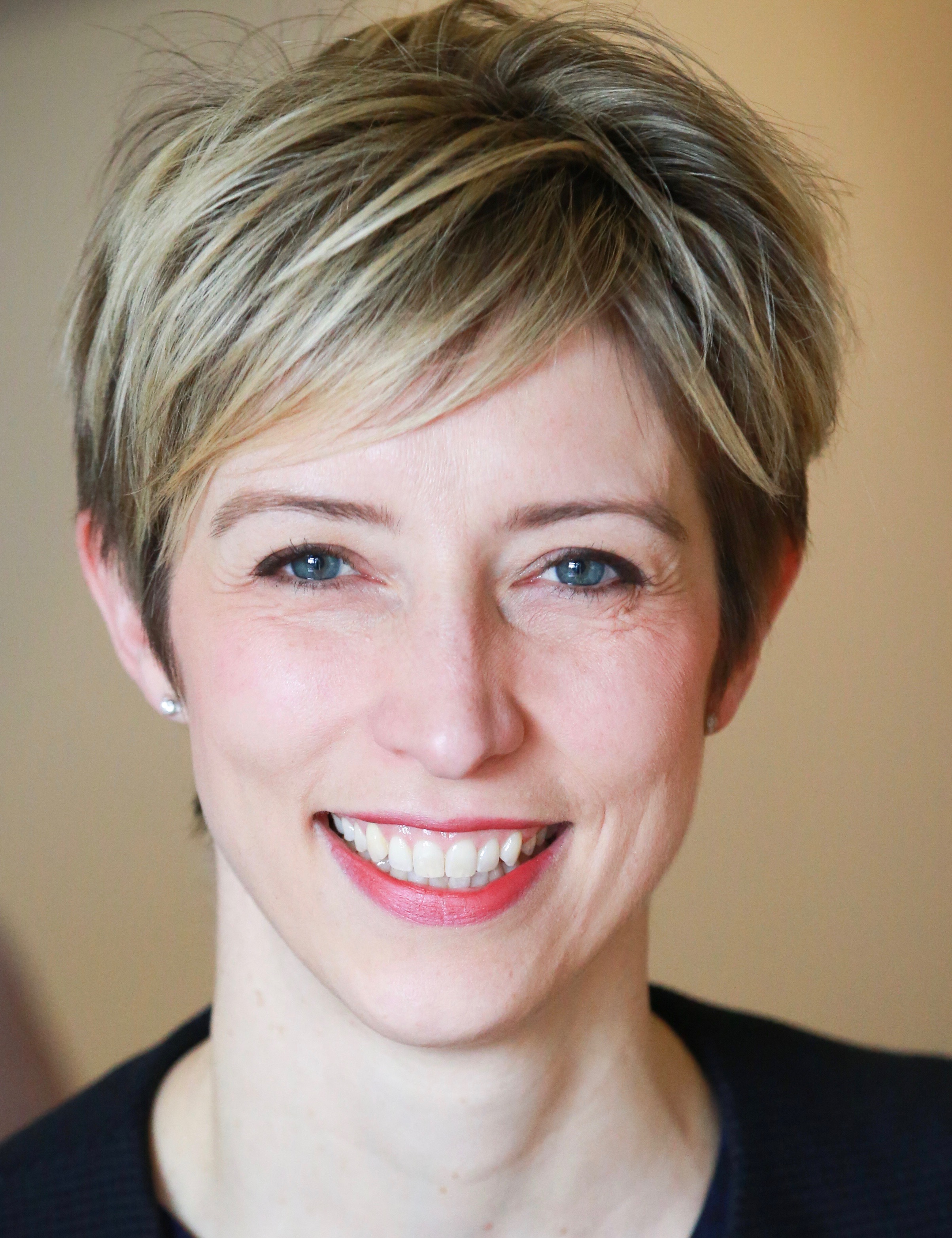Co-Located Conference AgendasStem Cells for Drug Discovery & Toxicity Screening 2017 |  Other Track Agendas Other Track AgendasOrgan-on-a-Chip and 3D-Culture: Companies, Technologies and Approaches | Organ-on-a-Chip and Body-on-a-Chip: In Vitro Systems Mimicking In Vivo Functions |

Monday, 10 July 201708:00 | Conference Registration, Materials Pick-Up, Morning Coffee and Pastries | |
Session Title: Opening Plenary Session | Session Sponsors |
| | 09:00 |  | Keynote Presentation Integration of Systems Biology with Organs on Chips for Disease Modeling and Drug Development
Linda Griffith, Professor, Massachusetts Institute of Technology (MIT), United States of America
|
| 09:30 |  | Keynote Presentation Fitting iPSCs, 3D Cell Culture, Tissue Chips and Microphysiological Systems into the Grand Scheme of Biology, Medicine, Pharmacology, and Toxicology
John Wikswo, Gordon A. Cain University Professor, A.B. Learned Professor of Living State Physics; Founding Director, Vanderbilt Institute for Integrative Biosystems, Vanderbilt University, United States of America
As the engineering supporting body-on-chip (BoC) studies advances and
begins to penetrate both science and industry, we need to explore three
separate multidimensional spaces – one that spans BoC components, one
that covers the analytical techniques to characterize BoC performance
and drug response, and a third that spans the fields of application.
The component technologies being brought together include induced
pluripotent stem cells (iPSCs), 3D cell culture (which is beginning to
involve vascularization), tissue-chip bioreactors that enable the
recreation to tissue-like microenvironments, and the hardware required
to operate coupled microphysiological systems in a manner that
recapitulates human physiology and its response to drugs and toxins. The
second, analytical space is only now coming to the fore. To date, most
tissue-chip studies have reported morphological features, the expression
of small sets of genes, or the secretion of a few, organ-specific
compounds. A much more comprehensive battery of techniques is already in
regular use in the pharmaceutical industry, including genomics,
proteomics, and transcriptomics. Metabolomics is rapidly moving into
prominence as the instrumentation improves and the databases expand.
What is needed, though, are comprehensive comparisons between in vitro
and in vivo studies, as has been recently demonstrated with a weighted
gene coexpression network analysis that compare rat liver in vivo with
both mouse liver in vitro and rat primary hepatocytes growing in a dish,
which showed that a mouse liver was a better model of the rat liver
than the primary rat hepatocytes in a dish, which more closely resembled
a rat liver exposed to a significant toxic load. The BoC community
needs to compare, for example, a mouse with a mouse-on-a-chip to confirm
that the appropriate physiology is being recapitulated. The final space
spans biology, medicine, pharmacology, physiology and toxicology. BoCs
offer, for the first time, the ability to recreate in vitro and in
parallel, with an ever-dropping cost, the effects of organ-organ
interactions. Nowhere will this be more important than in studies of
absorption, distribution, metabolism, and excretion - toxicity
(ADME-Tox), where one may need skin, lung, or gut to absorb a drug or
toxin, liver and kidney to metabolize and excrete drug metabolites and
toxins, adipose and muscle tissue to store metabolites and toxins, and a
means to characterize in depth the underlying processes and how they
affect the chosen target organs. BoCs will thereby contribute not only
to toxicology, but our fundamental understanding of cellular biology and
systems physiology, thereby advancing both pharmacology and medicine.
Given that we will never create a perfect microHuman BoC, we can use
these three spaces to guide the compromises we make as we create useful
models, even toy models, of human physiology. |
| 10:00 |  | Keynote Presentation Engineered Living Systems: Current State and Future Potential
Roger Kamm, Cecil and Ida Green Distinguished Professor of Biological and Mechanical Engineering, Massachusetts Institute of Technology (MIT), United States of America
Following on recent advances in understanding single cell behavior (Carrera & Covert, Trends in Cell Biology, 2015), and in developing simple, proof-of-concept biological machines (Raman et al., PNAS, 2015, Park et al., Science, 2016), organoids (Fatehullah et al, Nature Cell Biology, 2016), and organ-on-chip technologies (Huh, et al., Science, 2010), efforts are underway to standardize manufacturing methods for engineered living systems (ELS). The approaches proposed, however, are widely divergent and often lack a sound basis due to the absence of a fundamental understanding of aspects unique to ELS – e.g., complexity, the central role of emergence – and fail to take advantage of their extraordinary capabilities – self-assembly, growth, self-repair, adaptation, learning.
We need to build on our current knowledgebase for the development and design of ELS, rethinking much of what we have learned from abiotic engineered systems. A major effort is therefore required to characterize, model and image the dynamical behavior of ELS, and thus establish the design principles needed for robust manufacture. While many ELS can survive merely by diffusion of gases and nutrients from their environment, most systems exceeding several hundred microns in lateral dimension require some means for convective transport, such as the circulatory system found in many living organisms. Several approaches have been employed to meet these needs, either by engineered conduits or induced network growth from seeded or suspended cells. In this talk, some of these methods will be described, focusing on networks that form by self-assembly, tend toward a stabilized perfusable network within 1-2 weeks, synthesize and organize their own matrix environment, and adapt to changing conditions. Both the successes and challenges of creating these networks will be discussed with the aim of developing reliable, vascularized ELS amenable to biomanufacture. |
| 10:30 | Coffee Break and Networking in the Exhibit Hall | 11:00 |  | Keynote Presentation Human “Body-on-a-Chip” Systems to Test Drug Efficacy and Toxicity
Michael Shuler, Samuel B. Eckert Professor of Engineering, Cornell University, President Hesperos, Inc., United States of America
Human microphysiological or “Body-on-a-Chip” systems are powerful tools to assess the potential efficacy and toxicity of drugs in pre-clinical studies. Having a human based, multiorgan system, that emulates key aspects of human physiology can provide important insights to complement animal studies in the decision about which drugs to move into clinical trials. Our human surrogates are constructed using a low cost, robust “pumpless” platform. We use this platform in conjunction with “functional” measurements of electrical and mechanical activity of tissue constructs (in collaboration with J. Hickman, University of Central Florida). Using a system with four or more organs we can predict the exchange of metabolites between organ compartments in response to various drugs and dose levels. We will provide examples of using the system to both predict the response of a target tissue as well as off-target responses in other tissues/organs. We believe such models will allow improved predictors of human clinical response from preclinical studies. |
| 11:30 |  | Keynote Presentation Human Emulation System: an Organs-on-Chips Platform for Advancing Drug Discovery and Development
Katia Karalis, Executive Vice President of Research, Emulate, Inc., United States of America
Micro-engineered Organs-on-Chips show physiological functions consistent with normal living human or animal cells in vivo. Each Organ-Chip is composed of a clear flexible polymer about the size of a AA battery that contains hollow channels lined by living human cells. The cells are cultured under continuous flow and mechanical forces thereby recreating key factors known to influence cell function in vivo. Cells cultured under continuously perfused, engineered 3D microenvironments go beyond conventional 3D in vitro models by recapitulating in vivo intercellular interactions, spatiotemporal gradients, vascular perfusion, and mechanical microenvironments. Integrating cells within Organs-on-Chips, enables the study of normal physiology and pathophysiology in an organ-specific context. Cellular/molecular level resolution is enhanced and demonstrates key insights into the mechanisms of action of drug induced toxicity. Numerous recent advances in applications of these systems are relevant in drug discovery/development for compound selection, and in de-risking mechanistic concerns using various organ systems. In this presentation we will highlight studies from collaborative efforts across our Human Emulation System with various academic and industry partners to demonstrate the utility of the system as a more predictive human-relevant alternative for efficacy and safety testing of new chemical entities in humans. |
| 12:00 |  | Keynote Presentation Novel Microphysiological Multi-Organ Systems for Studies of Human Metabolic Diseases in Drug Discovery
Tommy Andersson, Drug Metabolism and Pharmacokinetics, Cardiovascular and Metabolic Diseases, AstraZeneca, Gothenburg, Sweden
Currently used pre-clinical models often suffer from poor translation of
drug responses to the patient due to the limited knowledge gained in
the efficiency and mode of action of the drug candidate. This
contributes to high attrition rates in early clinical programs. Multi
organ-on-a-chip emulating human physiology have the possibility to
improve success rate by mimicking the human disease state and improve
selection of the right targets and compounds early in drug discovery.
Such models will not only improve translation to patients but also
reduce time spent in early clinical programs as well as reducing the
needs for animal models. We developed a human liver - pancreatic islets
chip model. The model allows cross talk between cells from both organs
in a fluidic system and responds in a physiological way to glucose load
by increased insulin secretion leading to increased glucose consumption
(figure). Initial studies indicate that the model can become insulin
resistant and thus can be used as a metabolic disease model. Ongoing
studies are investigating how insulin resistance in liver cells effects
islet function by using the insulin receptor antagonists. |
| 12:30 | Networking Lunch in the Exhibit Hall, Meet Exhibitors and View Posters | |
Session Title: Emerging Themes and Technologies in 3D-Culture and Organs-on-Chips |
| | 13:30 |  | Keynote Presentation Regulatory Aspects of Functional Organ-on-a-Chip Systems for Preclinical Drug Discovery and Toxicology
James Hickman, Professor, Nanoscience Technology, Chemistry, Biomolecular Science and Electrical Engineering, University of Central Florida; Chief Scientist, Hesperos, United States of America
One of the primary limitations in drug discovery and toxicology research is the lack of good model systems between the single cell level and animal or human systems. In addition, with the banning of animals for toxicology testing in the EU, the development of body-on-a-chip systems to replace animals with human mimics is essential for product development and safety testing. Our research focus is on the establishment of functional in vitro systems to address this deficit where we seek to create linked multi-organ mimics and their subsystems to model motor control, muscle function, myelination and cognitive function, as well as cardiac conduction and force generation. The idea is to integrate microsystems fabrication technology and surface modifications with protein and cellular components, for initiating and maintaining self-assembly and growth into biologically, mechanically and electronically interactive functional multi-component systems in a circulating serum-free medium. Our philosophy is to start with 2D systems and only add complexity as needed to address biological questions to keep cost of the system at a minimum. We are using this ability to manipulate biological systems and integrate them with silicon-based systems to create body-on-a-chip systems for high content drug discovery. Examples will be given of some of the more advanced body-on-a-chip systems including a recent 4-organ system, neuromuscular junction system and integrated cancer subsystems that are being developed as well as the results of six workshops held at NIH to explore what is needed for validation and qualification of these platforms. |
| 14:00 | Using 3D Cultures of Human Brain Tissue for Pathway Discovery and Validation
William Gray, Professor of Functional Neurosurgery, Cardiff University School of Medicine, United Kingdom
We have developed a novel 3D culture system for human cortex and hippocampus using fresh surgically resected tissue. We have used this to investigate pathways controlling adult hippocampal neurogenesis in-vitro ranging from pathway discovery and validation to novel compound testing. | 14:30 |  Technology Spotlight: Technology Spotlight:
A Benchtop Microfluidic Platform for Culturing Tissue with Live Imaging Under Physiological Flow Conditions
Thomas Corso, Chief Technical Officer, CorSolutions
To date, tissue culture with live imaging under physiological flow conditions is challenging. To address these difficulties CorSolutions has developed a Benchtop Microfluidic Culture Platform for studying tissue culture under physiologically relevant conditions outside of an incubator. This flexible, universal platform incorporates fluidic interconnects, pulse-free fluid delivery pumps, and optics to offer a simple alternative to the conventional incubator. The Benchtop Microfluidic Culture Platform can interface a variety of microfluidic devices to the macro world. To evaluate the platform, perfused microvessels consisting of human umbilical cord vascular endothelial cells, expressing green fluorescent protein, were cultured. The approach allowed for live cell imaging while subjecting the culture to the physiological shear stress of 15 dynes/cm2, throughout the 3 day experiment. The results showed an unexpected active migration of cells both with and against the flow, including traversal of the branching channels, and their eventual alignment and polarization in the direction of flow. The live imaging revealed cell behavior that had never before been observed as endothelial cells had been believed to be quiescent, undergoing mitosis only once every one to two years. Although the implications of the observed cell migrations are not yet known, it is clear that the Benchtop Microfluidic Culture Platform is a tool with tremendous potential for probing cellular behavior.
| 15:00 | Coffee Break and Networking in the Exhibit Hall | 15:30 |  Technology Spotlight: Technology Spotlight:
Leveraging Microfabrication to Create Scalable Complex in vitro Models of Tissue
Joseph L Charest, Program Manager, Charles Stark Draper Laboratory
We present a microfluidics-based model tissue which expresses active organ-specific function. Controlled microfluidic fluid flow, cell-substrate topography, and cell-cell cues are used to create tissue which can be evaluated within the microfluidic architecture for barrier function and active transport function. To achieve higher levels of throughput, the model can be replicated within a 96-well format while still maintaining the unique characteristic of controlled flow. To improve data collection, integrated electrical traces measure trans-epithelial/endothelial electrical resistance (TEER) in near real-time and provide a means to create additional sensing capabilities in the future. The microfluidic model demonstrates the ability to generate tissue in vitro with tissue-specific function, provides near real-time feedback on tissue barrier function, and can scale to relevant levels of throughput resulting in a screening tool for drug interaction with transport tissues.
| 16:00 |  Technology Spotlight: Technology Spotlight:
Hybrid Sensor Integration in Resealable Microfluidic Flowcell Systems as a Toolbox for Organ-on-a-Chip Applications
Herman Blok, Business Development Manager, Micronit Microtechnologies
Building on our microfluidic platform technology and interfacing solutions for Organ-on-a-Chip applications we demonstrate here integrated sensors based on electrode-integration for TEER (trans epithelial electrical resistance) or EIS (electrochemical impedance spectroscopy), as well as chemical sensors, such as oxygen sensors.
| 16:30 | Microfluidic Organ-on-a-Chip Devices for Stem-Cell Cultivation, Differentiation and Toxicity Testing
Holger Becker, Chief Scientific Officer, Microfluidic ChipShop GmbH, Germany
We have developed diagnostic multi-organ microfluidic chips based on patient specific induced pluripotent stem cell (iPS) technology to explore liver dependent toxic effects of drugs on individual human tissues such as liver or kidney cells. Based initially on standardized microfluidic modules for cell culture, we have developed integrated microfluidic devices which contain different chambers for cell/tissue cultivation as well as on-chip cell-culture medium actuation with an on-board peristaltic pump and gas exchange using integrated membranes. The devices are manufactured using industrial manufacturing methods. In the project, suitable surface modification methods of the used materials as well as hybrid integration of different elements had to be explored. We have been able to successfully demonstrate the seeding, cultivation and further differentiation of modified iPS, as shown by the use of differentiation markers, thus providing a suitable platform for toxicity testing and potential tissue-tissue interactions. | 17:00 |   | Moderator Fireside Talk: Fusing Microphysiological Systems and Systems Biology Toward Fulfilling Their Promise
Emma Sceats, Chief Executive Officer, CN Bio Innovations Ltd.
Douglas Lauffenburger, Professor/Head, Massachusetts Institute of Technology, United States of America
This fireside talk will examine advances in the field of systems biology and how the marriage of computational systems biology and microphysiological systems will be of significant importance to progress in both of these fields during the next decade.
Beer and Wine will be served during this fireside talk to facilitate networking and engagement. |
| 18:00 | Networking Cocktail Reception with Beer, Wine and Appetizers. Enjoy the Boston Skyline, Engage with Colleagues and Discuss Collaborations and Partnerships | 19:30 | Close of Day 1 of the Conference | 19:45 | Dinner Short Course on 3D-Culture [Separate Registration Required] |
Tuesday, 11 July 201707:00 | Morning Coffee, Breakfast Pastries, and Networking in the Exhibit Hall | |
Session Title: The Convergence of Organs-on-Chips and 3D-Culture Approaches |
| | 07:30 | Developing Artificial Alveoli for Rapid Drug Screening Application
Ayesha Arefin, Researcher, University of New Mexico, United States of America
Drugs tested on animal models and on humans do not always produce the same results in both species; the divide between the two can be bridged by a reliable in vitro lung model. Because alveoli is a target for several drugs, an alveolar model can be a platform for both designing drugs and studying lung diseases. It should allow for gas exchange, growth of alveolar epithelial cells, extracellular matrix production, and have similar mechanical properties to alveoli, creating an environment conducive to normal metabolic activity and cellular responses. Existing artificial lung models that use polymeric membranes to inhabit lung cells are limited by the lack of biocompatibility or the necessary strain profile. We report the fabrication of flexible polyurethane membranes of 15µm thickness, which imitate the alveolar wall, using spin coating techniques, and an efficient technique to consistently handle and integrate these delicate membranes into microfluidic devices. The membranes were characterized for their elastic properties using a microfluidic-based bulging test system. 6kPa fluidic pressure was applied to execute cyclic stress on the membranes for two weeks without failure. Finally, Human Small Airway Epithelial Cells (HSAECs) were cultured on the polyurethane membrane. Increased surfactant and aquaporin production were observe compared to standard culture plates and also investigated the effect of mechanical stretch on the airway epithelial cells. Our results suggest a use of this artificial alveolus in the development of an effective platform for rapid drug screening. | 08:00 | Controlled Development of Functional Cerebellar Organoids on Synthetic Peptide-based Hydrogels
Aiste Jekabsone, Researcher, Lithuanian University of Health Sciences, Lithuania
Free-standing transparent synthetic hydrogel inserts were designed as microscopy and plate reader-compatible ECM-mimicking scaffolds. They promoted development of cerebellar granule layer-like organoids with functional neuronal networks from cerebellar explants and were further optimized to control neuritogenesis and spheroid size. | 08:30 | GravityFLOW: A Microphysiological System Built For 3D Microtissue Spheroids
Olivier Frey, Vice President Technologies and Platforms, InSphero AG, Switzerland
The GravityFLOW microfluidic platform builds on the European project "Body-on-a-Chip" in collaboration with ETH Zurich, and is fully tailored to incorporate microtissue spheroids. The platform enables culturing of microtissues under physiological flow conditions, with the flexibility to interconnect and culture different types of microtissues for a variety of pre-clinical testing applications. The full polystyrene device is based on SBS-plate standards, includes 8 separate channels and each channel contains up to 10 spheroid compartments. Up to 10 same or different spheroids can be interconnected and cultured in 8 identical or different conditions in parallel. Currently, we are investigating liver-tumor and liver-islet interactions. Open media reservoirs are located at both ends of each channel. Perfusion flow is generated through tilting the device back and forth on an automated system inside an incubator. Multiple devices can be operated in parallel. Its simplicity and robustness in handling together with the compatibility to automation makes the platform truly scaleable. | 09:00 | Resealable, Optically accessible, PDMS-free Fluidic Platforms for Organs on Chips
Ashutosh Agarwal, Assistant Professor, Department of Biomedical Engineering, University of Miami Miller School of Medicine, United States of America
We report the design and fabrication of a robust fluidic platform built out of inert plastic materials and micro-machined features that promote optimized convective fluid transport. The platform is tested for perfusion interrogation of rodent and human pancreatic islets, dynamic secretion of hormones, concomitant live-cell imaging, and optogenetic stimulation of genetically engineered islets. A coupled quantitative fluid dynamics computational model of glucose stimulated insulin secretion and fluid dynamics was first utilized to design device geometries that are optimal for complete perfusion of three-dimensional islets, effective collection of secreted insulin, and minimization of system volumes and associated delays. Fluidic devices were then fabricated through rapid prototyping techniques, such as micromilling and laser engraving, as two interlocking parts from materials that are non-absorbent and inert. Finally, the assembly was tested for performance using both rodent and human islets with multiple assays conducted in parallel, such as dynamic perfusion, staining and optogenetics on standard microscopes, as well as for integration with commercial perfusion machines. The optimized design of convective fluid flows, use of bio-inert and non-absorbent materials, reversible assembly, manual access for loading and unloading of islets, and straightforward integration with commercial imaging and fluid handling systems proved to be critical for perfusion assay, and particularly suited for time-resolved optogenetics studies. | 09:30 | Nano-Based Platforms For Controlling Neuronal Organization and Growth
Orit Shefi, Associate Professor, Head of Neuroengineering Laboratory, Faculty of Engineering and Institute of Nanotechnologies and Advanced Materials, Bar-Ilan University Israel, Israel
In this talk I will present our recent studies of 3D nanostructured platforms for promoting and directing neuronal growth and drug delivery. As physical mechanical forces and contact guidance play key roles in neuronal morphogenesis, we used magnetic nanoparticles (MNPs) as mediators to apply forces locally on neurons throughout their migration. Following incubation, MNPs accumulated in the cells, turning the cells sensitive to magnetic stimulation. Then, we applied magnetic fields with controlled magnetic flux densities at multiple scales of size and strength. Plating the cells atop a magnetic micropatterned device has led to an organized network of cell clusters. Next, we used the ability to control MNP movement to shape the extracellular environment of the cells. We mixed MNPs in collagen hydrogel and applied external magnetic field during the gelation period, aligning the MNPs and the collagen fibers. As neurons rely on physical topographical elements, neurons embedded within the aligned gel demonstrated polarized growth pattern. This platform is now examined as a novel method to direct neuronal growth and to bridge gaps efficiently post trauma. Our study presents an emerging magneto-chemical approach for promoting neuronal growth and repair. | 10:00 | Coffee Break and Networking in the Exhibit Hall | 10:30 |  Technology Spotlight: Technology Spotlight:
Currently Worth a Few Million Dollars, The Emerging Organs-on-Chips Market has the Potential to Become a Multi-Billion Dollar Market
Marjorie Villien, Technology & Market Analyst - Microfluidic & Medical Technologies, Yole Développement
Bringing a new drug to market is one of the longest and most costly paths any industry has to walk. The pharmaceutical industry therefore needs more predictive tools to make drug candidates fail earlier and cheaper. Other industries where toxicity testing is a major concern, such as cosmetics, agro-food and consumer goods, also need such solutions, in particular because animal testing is now banned for these industries in certain geographical areas. Several options have been envisioned, the most promising of which is certainly organs-on-chips. As a sign of confidence in this technology, significant funding has been allocated to organs-on-chips developers: DARPA and the NIH respectively awarded $140M and $76M over 5-year periods to support developments. In parallel, technology developers have raised more than $80M since 2012 with investors. But despite promises that make industrial players dream, we can barely speak about a real market today. Yole’s analysts estimate the combined sales of organs-on-chips devices and service offerings at no more than $7.5M in 2016. Indeed, very few players are already in the production and commercialization phase. Depending on the speed of adoption, and on the ability of organs-on-chips companies to overcome technical challenges and to upscale production, Yole’s analysts will detail different scenarios in which the market could grow at a compound annual growth rate from 2017-2022 of 38-57% to reach $60M-$117M in 2022. And this is only a first step. There is no doubt such technologies have the potential to become a multi-billion dollar market in the mid- to long-term future, given the billions of dollars they could help the industry to save every year.
| 11:00 |  Technology Spotlight: Technology Spotlight:
Effective Separation of the BioPrinting Atmosphere from Room Air for Protection of Tissue Constructs
Alicia Henn, Chief Scientific Officer, BioSpherix, Ltd.
Valuable cell and tissue constructs are highly vulnerable to microbial contamination from room air exposure. Placing bioprinters and other cell and tissue-handling equipment in clean rooms and standard biological safety cabinets (BSC) can reduce risks, however there is still bioburden introduced by human operators, even in cleanroom garb. The Xvivo GMP System® barrier isolator separates the cell handling environment from room air with a soft, flexible glovefront. Filtered, tanked, medical grade gases provide a completely controlled and aseptic internal environment for any biomanufacturing process. There is no mixing of room air with the cellular environment. We set out to determine whether effective separation of the room air from the bioprinting environment could reduce contamination of biomanufactured constructs. Using the INKREDIBLE 3D Bioprinter by CELLINK, we bioprinted test samples inside and outside of the Xvivo System and incubated the constructs in a color-changing highly permissive TSB broth for a minimum of five days. We found that enclosing the bioprinting process inside the Xvivo System eliminated contamination from the constructs and the equipment. We conclude that effective separation of the bioprinting atmosphere from the laboratory room air decreases contamination risks for both biomanufacturing equipment and cell and tissue products.
| 11:30 | Real-Time Assays to Monitor Cell Health in 3D Cultures (What You Might be Missing with Endpoint Assays)
Terry Riss, Senior Product Manager, Cell Health, Promega Corporation, United States of America
Recording data from the same sample of cells at different incubation times during a treatment protocol provides many advantages compared to using endpoint assays that kill cells and result in only a single measurement. In addition to eliminating error from pipetting into replicate assay plates to measure different endpoints or the same parameter at different times, “real time” assay chemistries that do not kill cells enable many opportunities to use the remaining live cell population for multiplexing with other assay chemistries. We will describe example real time assays applied to 3D cultures to measure cell health parameters (e.g. live cells, dead cells, apoptosis, metabolites) and provide recommendations for how to overcome challenges applying “off the shelf” assays to 3D culture models. | 12:00 | BioLithoMorphie®: A Method for the Construction of 3D Biological Morphologies
Andreas Schober, Head of Department Nano-biosystem Technology, University of Technology Ilmenau, Technische Universitat Ilmenau, Germany
Recent advances in the “life Sciences” related to organ -on-a chip, tissue engineering and pharmaceutical drug testing etc. will need methods to guide the assembly of cells in 3D. In this contribution we will explain our approach to gain complex cellular structures while using different polymers and biopolymers processed by micromachining, chemical pattern guided cell cultivation, photo polymerization, and organ printing methods. Such a “toolbox” transferring methods from microsystem technology and surface chemistry for the production of 3-dimensional biological morphologies could be defined as BioLithoMorphie®. By retrieving the main geometric features of a biological morphology on different geometric scales (biotechnical multiscale engineering) we are able to define the most important parameters to mimic complex tissue like structures of different organs . Due to folding and stacking of pre manufactured polymers (cell sheet layers) it is also possible to achieve tissue like structures including fluidic entities, e.g. to emulate the complete structure of liver lobules. Another promising approach is mimicking the morphologies of the blood stem cell niche. Experiments indicate that it is possible to maintain the stem cell characteristics of blood stem cells during proliferation in manufactured polymer foils of the bone marrow. This might be a breakthrough to get the chance for amplifying the number of stem cells for transplantation also in the treatment of leukemia. | 12:30 | Networking Lunch in the Exhibit Hall, Meet Exhibitors and View Posters | 13:30 | PuLMo: Configurable tools for Human Lung Micro-Physiological Systems
Pulak Nath, Technical Staff Member, Applied Modern Physics, Los Alamos National Laboratory, United States of America
PuLMo (Pulmonary Lung Models) represents a suite of enabling platforms to obtain user defined and integrated lung micro-physiological models, which has received an R&D100 award in 2016. A stepwise approach was taken to develop a suite of micro-engineered units to enable configurable and integrated MPS models for drug toxicity analysis. PuLMo was designed to recapitulate multiple critical features of the human lung. PuLMo incorporates the biophysical features of (1) air-liquid interface; (2) fractal airway network; (3) balloon shaped alveolar chambers; (4) cyclic stretching of the alveolar membrane; and (5) physiological breathing. PuLMo’s biological features included (1) ciliated cells; (2) mucus production; and (3) surfactant production. The platforms were fabricated using hybrid (subtractive + additive) manufacturing, allowing the integration of a wide range of materials. The stretchable alveolar membranes were fabricated using polyurethane. Breathing was carried out by stretching the alveoli membrane with a novel microfluidic aspiration principle. While the complexity of the integrated platform can be defined by the user, complete operation of PuLMo can require the perfusion and transition of multiple media. Therefore miniaturized pumps, valves, fluid circuit boards, and reservoirs were also developed to enable integrated operations. This presentation will give an overview of all the novel technologies that led to the R&D 100 award. | 14:00 | Derivation of Functional Human Platelets from Induced Pluripotent Stem Cell-derived Megakaryocytes Using a 3D-Microfluidic Bioreactor
Brad Dykstra, Senior Research Scientist, Platelet BioGenesis; Brigham and Women’s Hospital and Harvard Medical School, United States of America
To produce donor-independent platelets applicable for clinical use, we are advancing a serum-free and feeder-free protocol to generate functional megakaryocytes from human induced pluripotent stem cells. Human platelets can be efficiently produced from these megakaryocytes using our scalable microfluidic bioreactor that uses shear forces to trigger platelet production from these cells. Further scale-up of our device will enable cost-effective production of clinically relevant quantities of platelets, facilitating progression towards clinical trials. | 14:30 | Extracellular Matrix Thickness Directs Self-Assembly, Function, and Gene Expression Profiles of Three-Dimensional Placental Trophoblast Spheroids
Michael Wong, Researcher, Faculty of Health Sciences, McMaster University, Canada
The incorporation of ECM is essential for generating in vitro placental models that better mimic the architecture and function found within human tissues. However, the appropriate utilization of laboratory-derived ECM biomaterials in placental trophoblast modelling remains poorly understood. In this study, we investigated the effect of varying thicknesses of two ECM surfaces, collagen I and Matrigel, on placental trophoblast cell morphology, proliferation, and gene and protein expression. In the current study, the effect of varying thicknesses of collagen I and Matrigel on BeWo placental trophoblast cell morphology, proliferation, and gene expression (differentiation, syncytial fusion, invasion/migration) were investigated. Matrigel, but not collagen I, induced self-organization of BeWo trophoblasts into three-dimensional spheroids that maintained for up to 21 days. Notably, it was revealed that a critical hydrogel surface thickness was required to induce spheroid formation. Trophoblast spheroids exhibited thickness-dependent increases proliferation and invasive gene expression profiles compared to two-dimensional cultures. Genes involved in syncytial fusion also exhibited thickness-dependent changes in expression. In consideration of the increased use of 3D bioprinting and dynamic model systems within the last several years, proper integration of ECM surfaces will be a crucial step towards creating more in vivo-like models. The generation of 3D, self-assembling spheroid cultures through regulation of ECM surface thickness alone further contributes to the development of more physiologically-relevant placental in vitro systems and innovative drug screening tools for pregnancy.
| 15:00 | Biomimetic Tissue-Engineered Technology to Identify Tumor-Stroma Cross Talk and Novel Drug Candidates
Tania Konry, Assistant Professor, Department of Pharmaceutical Sciences, Northeastern University, United States of America
Development of a physiologically relevant and reproducible in vitro cancer model for preclinical and pharmacological studies continues remains a critical unmet need. Two-dimensional (2D) tissue culture models and monolayer cultures lack realistic complexity of TME and tumor heterogeneity, while the current methods of ex vivo 3D tumor models suffer from number of drawbacks including a) inconsistencies related to achieving uniformity of spheroid size, cell–cell and cell–matrix interactions, b) not suited for high-throughput screening assays and c) the difficulty to limit shear-related cell damage. A variety of microfluidic device designs have been utilized for long-term tumor spheroid culture and drug efficacy evaluation, however, most lack the integral TME and dynamic perfusion and/or influence immune-tumor cross-talk or/and prolong culture capabilities. Our innovative microfluidic platform technology is focused to generate biomimetic multicellular immunogenic spheroids. The proposed technology is based on integrated high-throughput microfluidic droplet based device capable of sequential generation, maintenance via continuous perfusion, stimulation and monitoring cellular dynamics of Alginate (Alg)-doped based micronized tumor spheroids. The Alg - doped hydrogel provides the mechanical strength to maintain the structural integrity of the spheroids and permit cellular encapsulation to mimic several important aspects of the in vivo environment such as a synthetic extracellular matrix (ECM), which promotes attachment of stroma cellular integrins to initiate signaling for cell survival and simulate the TME. We examined its capability to (1) allow recreation of TME and pathophysiological gradients to mimic the resistance to drug penetration; (2) cell composition and heterogeneity of the tumor to evaluate tumor cell survival in real-time; (3) investigate spatiotemporal interaction between cancer-stroma and cancer-immune cells during therapy; and (4) capture the dynamic data such as secretome analyses from lymphocyte and stroma cells that exert paradoxical effects in the TME, changes in cellular proliferation, and viability and migration in the presence and absence of immune and stromal cells. We hypothesize that a precisely defined spheroid size and composition at the onset of treatment will clearly affect and predict response to treatment. Our platform provides a novel yet overall simple in vitro platform that will generate and analyze 3D monodisperse hydrogel tumors for biologic studies and therapeutic drug screening, which is a critical step in the translational cancer drug development. | 15:30 | Coffee Break and Networking in the Exhibit Hall | 16:00 | Closing Panel Discussion: Emerging Themes and Trajectory of Organs-on-Chips, Tissue Chips and Microphysiological Systems Field
|
|


 Add to Calendar ▼2017-07-10 00:00:002017-07-11 00:00:00Europe/LondonOrgan-on-a-Chip and 3D-Culture: Companies, Technologies and ApproachesSELECTBIOenquiries@selectbiosciences.com
Add to Calendar ▼2017-07-10 00:00:002017-07-11 00:00:00Europe/LondonOrgan-on-a-Chip and 3D-Culture: Companies, Technologies and ApproachesSELECTBIOenquiries@selectbiosciences.com